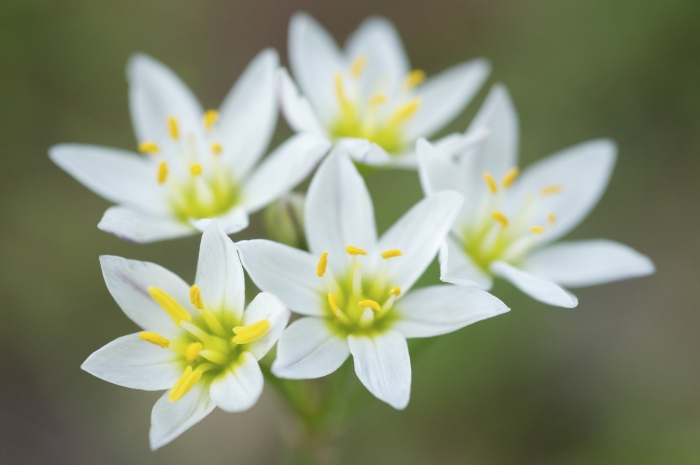Crowpoison
(Nothoscordum bivalve)
Crowpoison (Nothoscordum bivalve)
/
/

Eric in SF
CC BY-SA 3.0
Image By:
Eric in SF
Recorded By:
Copyright:
CC BY-SA 3.0
Copyright Notice:
Photo by: Eric in SF | License Type: CC BY-SA 3.0 | License URL: https://creativecommons.org/licenses/by-sa/3.0 | Uploader: Eric in SF | Publisher: Wikimedia Commons | Title: Nothoscordum_bivalve_2.jpg | Notes: {{Information |Description=Ochna serrulata |Source={{own}} |Date=2010-04-03 |Author=[[User:C T Johansson|C T Johansson]] |Permission= |other_versions= }} [[Category:Ochna serrulata]] |




















































Estimated Native Range
Summary
Nothoscordum bivalve, commonly known as Crowpoison, is a deciduous perennial herb that is native to subtropical and temperate America. It typically grows from a small bulb approximately one centimeter in diameter and produces one, sometimes two, erect stems reaching up to 40 centimeters (16 inches) in height. Crowpoison is notable for its spring-blooming flowers, which are star-shaped and come in shades of yellow, white, and orange, although they lack fragrance. The plant’s fruit is a capsule, which is less commonly observed in garden settings.
Crowpoison is valued for its ability to attract small butterflies, such as the falcate orangetip, making it a beneficial addition to pollinator gardens. It thrives in partial shade, requiring medium amounts of water and well-drained soils. While it is not commonly used in large-scale landscaping, it can be an attractive addition to wildflower meadows or naturalized areas where its low maintenance and ability to naturalize are advantageous. Gardeners should be aware that despite its common name, Crowpoison is not poisonous to crows or other birds. However, all parts of the plant are toxic to humans and pets if ingested.CC BY-SA 4.0
Crowpoison is valued for its ability to attract small butterflies, such as the falcate orangetip, making it a beneficial addition to pollinator gardens. It thrives in partial shade, requiring medium amounts of water and well-drained soils. While it is not commonly used in large-scale landscaping, it can be an attractive addition to wildflower meadows or naturalized areas where its low maintenance and ability to naturalize are advantageous. Gardeners should be aware that despite its common name, Crowpoison is not poisonous to crows or other birds. However, all parts of the plant are toxic to humans and pets if ingested.CC BY-SA 4.0
Plant Description
- Plant Type: Herb
- Height: 0.6-1.3 feet
- Width: 0.3-0.5 feet
- Growth Rate: Moderate
- Flower Color: White
- Flowering Season: Spring
- Leaf Retention: Deciduous
Growth Requirements
- Sun: Full Sun, Part Shade
- Water: Medium
- Drainage: Fast
Common Uses
Butterfly Garden, Drought Tolerant, Low Maintenance
Natural Habitat
native to subtropical and temperate America
Other Names
Common Names: False Garlic, Meadow Garlic, Crow-Poison
Scientific Names: , Nothoscordum bivalve, Allium bivalve, Brodiaea aurea, Ornithogalum bivalve, Geboscon bivalve, Oligosma bivalve, Oligosma bivalve publ, Ornithogalum pulchellum,
GBIF Accepted Name: Nothoscordum bivalve (L.) Britton